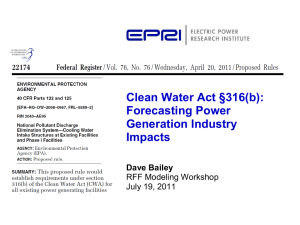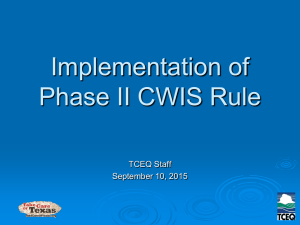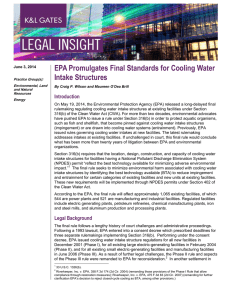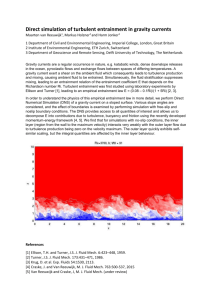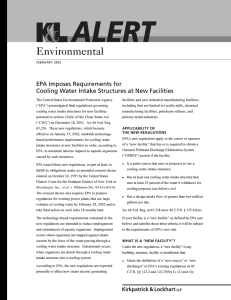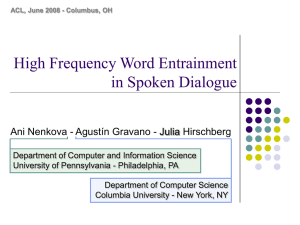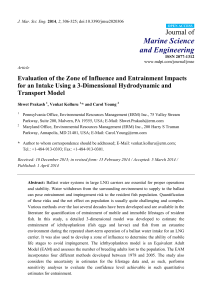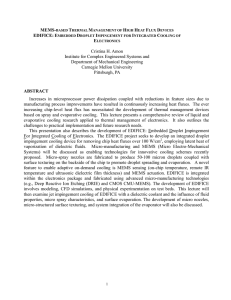Clean Water Act Section 316(b): Cooling Water Intake
advertisement
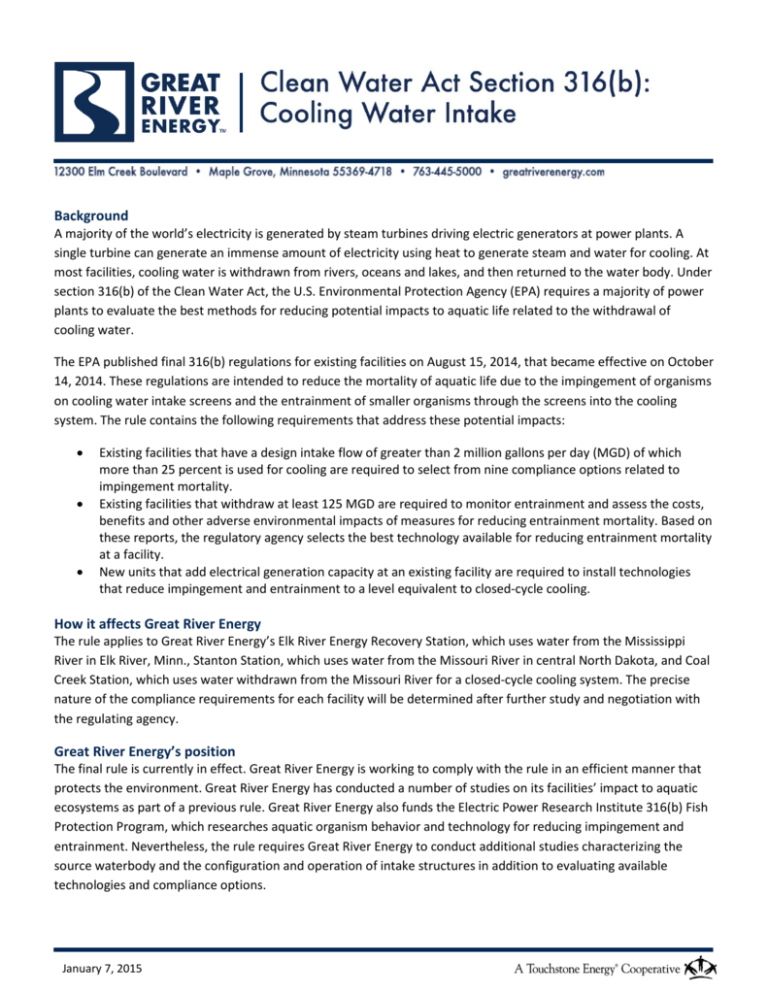
Background A majority of the world’s electricity is generated by steam turbines driving electric generators at power plants. A single turbine can generate an immense amount of electricity using heat to generate steam and water for cooling. At most facilities, cooling water is withdrawn from rivers, oceans and lakes, and then returned to the water body. Under section 316(b) of the Clean Water Act, the U.S. Environmental Protection Agency (EPA) requires a majority of power plants to evaluate the best methods for reducing potential impacts to aquatic life related to the withdrawal of cooling water. The EPA published final 316(b) regulations for existing facilities on August 15, 2014, that became effective on October 14, 2014. These regulations are intended to reduce the mortality of aquatic life due to the impingement of organisms on cooling water intake screens and the entrainment of smaller organisms through the screens into the cooling system. The rule contains the following requirements that address these potential impacts: • • • Existing facilities that have a design intake flow of greater than 2 million gallons per day (MGD) of which more than 25 percent is used for cooling are required to select from nine compliance options related to impingement mortality. Existing facilities that withdraw at least 125 MGD are required to monitor entrainment and assess the costs, benefits and other adverse environmental impacts of measures for reducing entrainment mortality. Based on these reports, the regulatory agency selects the best technology available for reducing entrainment mortality at a facility. New units that add electrical generation capacity at an existing facility are required to install technologies that reduce impingement and entrainment to a level equivalent to closed-cycle cooling. How it affects Great River Energy The rule applies to Great River Energy’s Elk River Energy Recovery Station, which uses water from the Mississippi River in Elk River, Minn., Stanton Station, which uses water from the Missouri River in central North Dakota, and Coal Creek Station, which uses water withdrawn from the Missouri River for a closed-cycle cooling system. The precise nature of the compliance requirements for each facility will be determined after further study and negotiation with the regulating agency. Great River Energy’s position The final rule is currently in effect. Great River Energy is working to comply with the rule in an efficient manner that protects the environment. Great River Energy has conducted a number of studies on its facilities’ impact to aquatic ecosystems as part of a previous rule. Great River Energy also funds the Electric Power Research Institute 316(b) Fish Protection Program, which researches aquatic organism behavior and technology for reducing impingement and entrainment. Nevertheless, the rule requires Great River Energy to conduct additional studies characterizing the source waterbody and the configuration and operation of intake structures in addition to evaluating available technologies and compliance options. January 7, 2015
